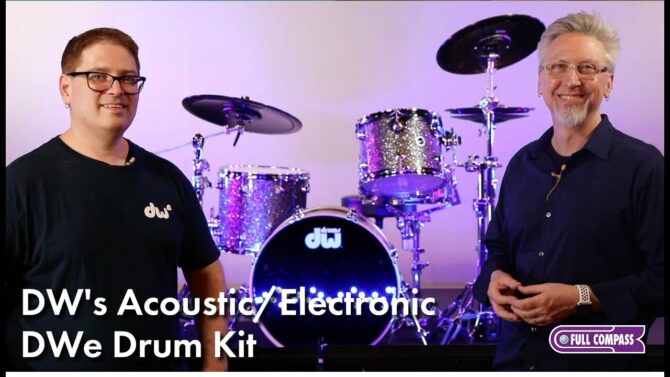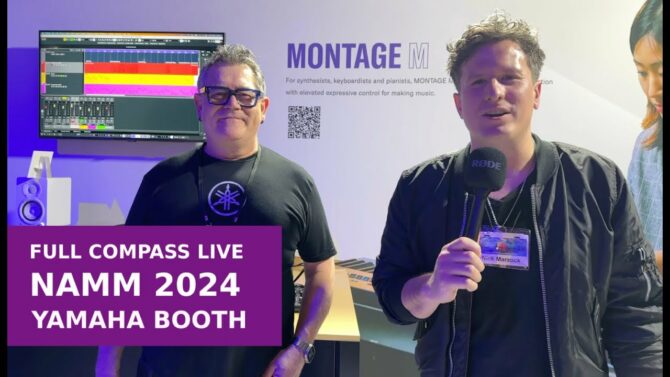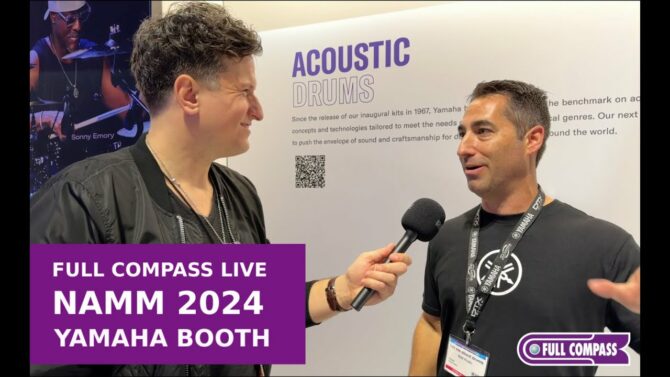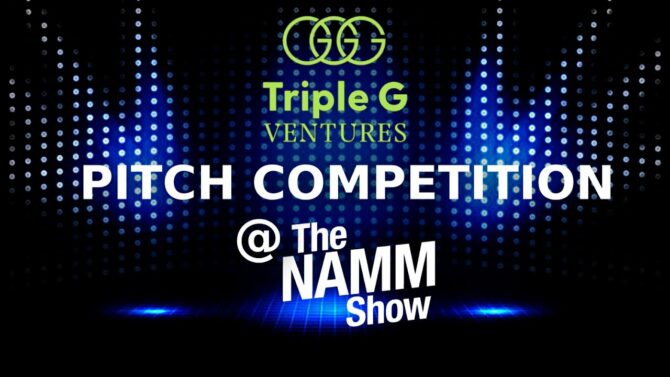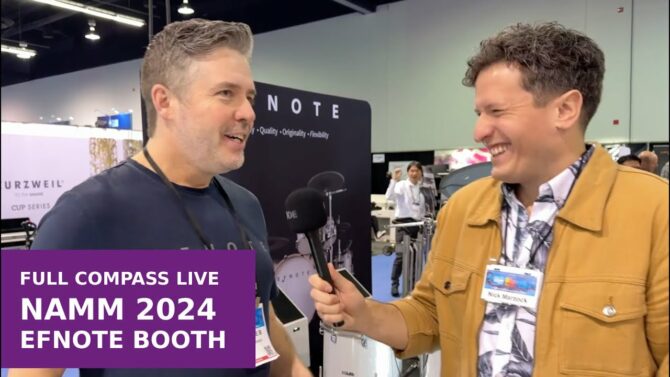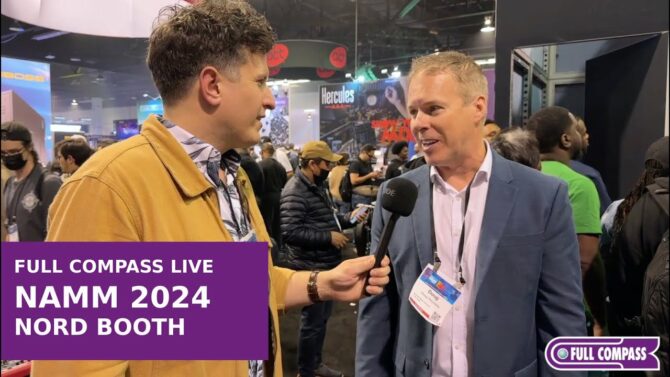It’s not just about “hitting” notes any more...
Traditionally, there have been two types of keyboard actions: piano, which allowed for dynamics Definition:
Definition:
In a musical performance, changes in overall volume levels, often accompanied by timbral changes. Example: Classical symphonic music has a wide dynamic range, while dance mixes have a much narrower dynamic range., and organ, which essentially turned notes on and off. Synthesizers and other electronic keyboards went the organ route initially, but over time, added expressiveness through three main options:
- Velocity
 Definition:
Definition:
See MIDI Velocity. translated the dynamics of your playing to control volume, tone, or other parameters so that the playing was more piano-like. - Aftertouch
 Definition:
Definition:
A modulation signal added by exerting pressure on a keyboard key after it has already been pressed down. (also called pressure) provided a function where after a key was down, you could press on the key to further influence the sound—like add vibrato Definition:
Definition:
A periodic variation in pitch., or “swell” a brass part. This affected all keys that were held down, even if you pressed down on only one key. - Polyphonic
 Definition:
Definition:
The ability of an electronic musical instrument to play more than one note simultaneously. aftertouch allowed each key to send its own pressure data Definition:
Definition:
Information used by a computer in order to arrive at a decision. Although this is a plural term, it's often treated in the singular. to control the sound, like being able to swell only one note out of a brass section chord.
In addition, synthesizer keyboards sprouted modulation Definition:
Definition:
The process of one signal influencing a different signal, in real time. This can occur with radio frequencies (e.g., using audio to modulate a radio frequency carrier signal), audio frequencies (see: FM Synthesis and Ring Modulation), or sub-audio signals (see: LFO). and pitch bend Definition:
Definition:
To slide smoothly over time through all frequencies between a note of one pitch and a note of another pitch. See also: Pitch. wheels (or levers), ribbon controllers (where sliding your finger along a strip could change the sound), footpedal jacks, and other ways to add expressiveness.
But we’re well on our way into the 21st century, and it’s a different world—virtual synthesizers now replace or supplement hardware synthesizers/samplers, and new controllers take advantage of new technology. Let’s look at two modern—and important—keyboard technologies.
ROLI Keyboards
ROLI’s keyboards, like the Seaboard Rise 25, are a different take on conventional keyboard controllers. The keyboard layout is the same, but the keys themselves have a smooth, rubbery feel so that unlike a conventional synth keyboard, they can do far more than just switch a sound on and off (Fig. 1).

The ROLI keyboards also take advantage of MIDI Definition:
Definition:
(Musical Instrument Digital Interface) A hardware/software standard for communication of musical data digitally among electronic instruments, effects, and computers. However it is also used for to control lighting, pyrotechnics, theatrical displays, and mechanical devices. For example, the fountains at the Bellagio in Las Vegas is controlled by MIDI. Also called MIDI 1.0. Polyphonic Expression (MPE), which expands on the original MIDI specification to provide additional ways to define notes and performance gestures. The ROLI not only responds to velocity and polyphonic aftertouch, but also to sliding your finger left or right on a note, moving front to back, and note release (how fast you remove your finger from the note). MPE lets you play with the note once your finger touches the key, similarly to how a guitarist can bend a string or do finger vibrato after fretting a string.
It’s possible to add this kind of expressiveness in the studio by overdubbing Definition:
Definition:
Recording new sound to a blank track on a multitrack or another recorder, while listening to a previously recorded sound in order to synchronize the parts. controller Definition:
Definition:
1. A MIDI device (keyboard, guitar with appropriate interface, etc.) that alters parameters in a synthesizer or other MIDI sound generator. 2. A device (e.g., modulation wheel, pitch bender, ribbon controller, etc.) that varies some specific parameter in a synthesizer or other MIDI sound generator. data that alters the sound, but this is a tedious—and not particularly satisfying—experience. Spontaneous expressiveness is not just about live Definition:
Definition:
Live broadcast of an event or program without substantial delay or editing. performance; in the studio, real-time performances add life to recordings.
Although the ROLI is laid out like a keyboard, you’ll need to learn some new techniques to take full advantage of the added expressiveness. It also helps to have virtual instruments that are compatible Definition:
Definition:
Capable of operating with a particular selection of hardware or software. with the MPE (MIDI Polyphonic Expression) standard that was adopted by the MIDI Manufacturers Association, because then the finger motions will be mapped to musically significant parameters. ROLI keyboards include a link to download Definition:
Definition:
To receive data at one computer from another source (computer, electronic mail service, the cloud, etc.) a capable and expressive synthesizer, Equator (Fig. 2), whose sounds are optimized for MPE.

When checking out the ROLI, MPE instruments give the best introduction to what the ROLI’s expressiveness options can do. However, you can assign the ROLI’s control signals to parameters in any virtual synthesizer—for example, if you assign side-to-side motion to pitch Definition:
Definition:
For a given range of audio frequencies, pitch represents where a single sound falls within that range., then you can add vibrato the same way a guitar player does.
Native Instruments Komplete Kontrol Controllers
Like the ROLI, the Komplete Kontrol keyboards don’t make any sounds but are optimized to control software-based virtual instruments. In addition to including wheels for modulation and pitch bend, a ribbon controller Definition:
Definition:
A strip-shaped, flat, two-dimensional control surface. Moving your finger on the strip controls one more tone generator or signal processing parameters., and two footpedal jacks for controlling sounds directly, they offer 8 touch-sensitive rotary controls and 8 buttons. While playing, it’s easy enough to tweak Definition:
Definition:
1. To make minor adjustments. 2. A person who is a perfectionist. a control to edit the sound for additional expressiveness—a process helped greatly by dual displays that show which controls affect which parameters (Fig. 3).

The Komplete Kontrol keyboards also support the Native Kontrol Standard (NKS) that maps the keyboard’s hardware controls to parameters in software synths and now, with NKS version 2.0, controls can also map to effects that follow the synthesizer (like reverb Definition:
Definition:
Short for Reverberation. The myriad echoes of decaying amplitude created in an acoustic environment. Reverberation may be simulated electronically, mechanically using springs or a metal plate, or in a specially built physical chamber with reflective surfaces where a speaker sends audio into the chamber, and a microphone picks up the reflections., delays, limiters, EQ, etc.). Best of all, NKS 2.0 has been opened up to developers other than Native Instruments, so now about 75 manufactures (including Waves, Eventide, Arturia, Heavyocity, Sonokinetic, etc,) are creating NKS-friendly plug-ins. Currently, around 500 instruments and effects are compatible with NKS (Fig. 4).

The big deal about this is that without a standard way of mapping, then it’s up to the user to figure out how to map controls to parameters, store those settings, and try to be consistent when calling up different instruments or effects. With NKS, you just load the plug-in Definition:
Definition:
A software module, typically for signal processing or analysis, that inserts into the signal path of a DAW or video editor, or in some digital consoles. Also Plugin., and look at the screen to see what the hardware does. (Note that Native Instruments’ Maschine also supports NKS 2.0.)
What makes this possible is the Komplete Kontrol plug-in, which supplements the keyboard. When you load this into a virtual studio program like Pro Tools, Studio One Professional, Digital Definition:
Definition:
A signal or data expressed as series of the digits 0 and 1, typically represented by values of a physical quantity such as voltage or magnetic polarization. Performer, Nuendo, Mixcraft, Samplitude, Live, etc., its interface Definition:
Definition:
A device that adds I/O capability to another device. Common would be a MIDI, audio or video interface for a computer. provides browsing and even audio previews for all your NKS compatible plug-ins, and you can also open up the plug-in’s interface for additional editing.
The bottom line is that the Komplete Kontrol keyboards are fine controllers in their own right, but matched with NKS, they regain the hands-on control that we most often associate with analog Definition:
Definition:
A signal that is continuous in nature, as opposed to being defined as a series of discrete numbers (or elements) as found in digital signals; electrically "analogous" to an acoustical signal in the air. instruments and processors.
What About the Future?
Both the Komplete Kontrol and ROLI keyboards are harbingers of the future. The NKS standard brings order out MIDI controller Definition:
Definition:
Keyboards, drum pads, wind controllers, guitar controllers, and other physical devices that allow human control over synths and samplers. See: MIDI. chaos. Considering that NKS was initially Native Instruments-specific, and has now been opened up to other software companies, as more companies sign on it has the potential to become an industry standard—not just a manufacturer’s standard.
Meanwhile, ROLI has tackled the issue of making keyboards more expressive, aided in no small part by the adoption of the MPE standard. Being able to control the sound from your fingers instead of having to use mechanical devices like wheels and pedals is a big deal. It’s important to understand that in terms of playing technique, the ROLI is a bit like learning a new instrument—but the standard keyboard layout shortens the learning curve.
Can a keyboard attain parity with an electric guitar for expressiveness? It’s starting to look like the answer is yes.












